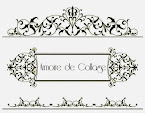Thursday, April 19, 2012
What's In A Name?
To the new generation of antique collectors, some terms may be unfamiliar. A few unusual ones are listed, with one being discussed just recently on the Antiques Roadshow when in Houston.
Garniture
Local ceramics expert, David Lackey of David Lackey Antiques & Art, defined a ‘garniture.’ "It's a group of decorative objects made as a set to be prominently displayed on something like a mantel or a buffet table," stated Lackey.
He went on to explain that they were never made in sets of twos, fours, or sixes. "They always come in odd numbers," he says. "There's always three, five, or seven, with a central element flanked by pairs." For instance, the centerpiece might be a clock, flanked by a pair of candlesticks or urns. Often the center item would be a large compote or bowl, or an elaborate epergne…a bowl with arms supporting smaller bowls.
Popular in the 18th & 19th centuries, garnitures were elaborately made of French old Paris porcelain, Meissen porcelain from Dresden, Germany, and emulated in Naples, Italy, by the Capodimonte porcelain manufactory.
Unfortunately they were deemed ostentatious and fell out of favor in the 20th century. The garnitures were often separated when estates were passed on to the next generation, or a piece may have been broken. Those that have survived the test of time, command high prices.
Parure
Often referred to as a suite, a ‘parure’ is an entire wardrobe of matching jewelry which could include a necklace, a bracelet, brooch, ring, and a pair of earrings, and at one time also might include a comb, a tiara, a diadem (ornamental headband), and even a belt clasp. And old French term, parure means adornment, from the verb parer, to adorn. Any woman with this many matching pieces would certainly be guilty of adorning herself, and by today’s standards…shamelessly. But in 17th century Europe, a woman of station would not be considered well dressed if the ensemble of jewelry did not match, and not worn in its entirety.
Minaudiere
Minaudieres are small, rigid metal boxes with several compartments for all the essentials a woman would need for an evening out. They included a powder compact, lipstick, comb, money clip, cigarette compartment, and a coin section. The first were designed in the 1930s by Charles Arpels of Van Cleef & Arpels, the French jewelry, watch & perfume company. The popular concept was then produced by other jewelers and cosmetic companies. They remain treasured keepsakes and often handed down in the family to the next generation. The value on minaudieres has remained high, and to find one in very good to mint condition is rare.
With Mother’s Day approaching, any of these items…a garniture, parure, or minaudiere, would make a magnificent gift for Mom. Expect all to be over $100 in value, but keep in mind it will become a family heirloom.
Section on garnitures sourced from Antique Roadshow website http://to.pbs.org/JgJxkr & Mr. David Lackey’s Facebook page http://on.fb.me/J5QSUM
Section on parures sourced from Wikipedia
Section & photo of minaudieres: “Ladies Vintage Accessories” by LaRee Johnson Bruton
Photo collage by Collage
Photo caption: (left to right) The 19th century ‘garniture’ appraised by David Lackey on the Houston episode of the Antiques Roadshow; a 1950s “Weiss” parure; and three ‘minaudiers’, circa 1930s.
Labels:
antiques,
collectibles,
garniture,
jewelry,
minaudiere,
parure,
purses,
retro,
vintage
Subscribe to:
Post Comments (Atom)




No comments:
Post a Comment